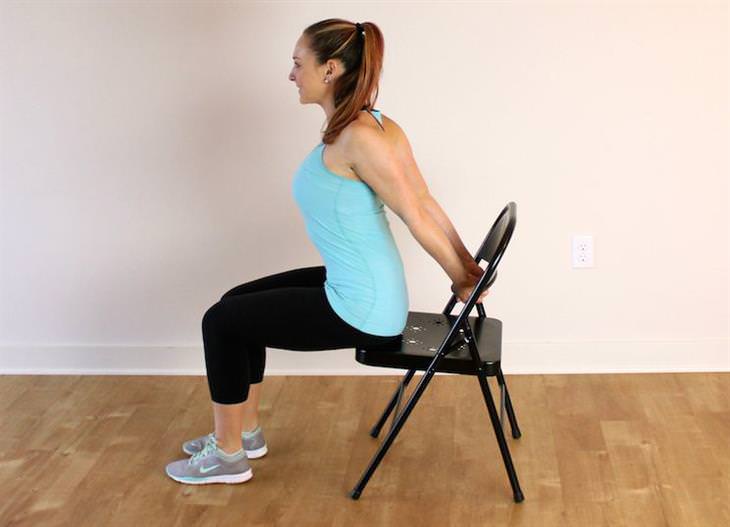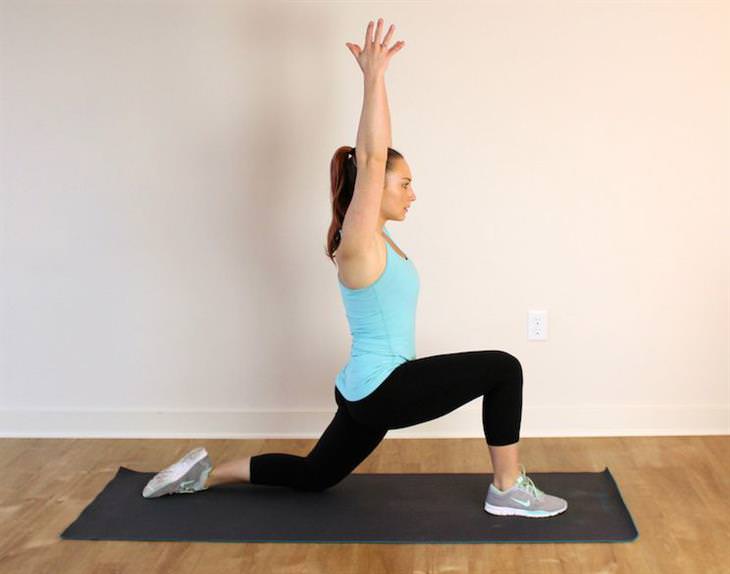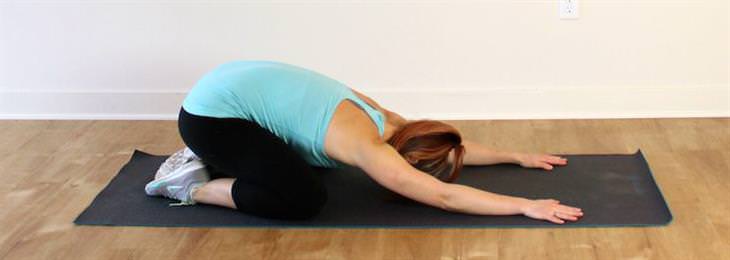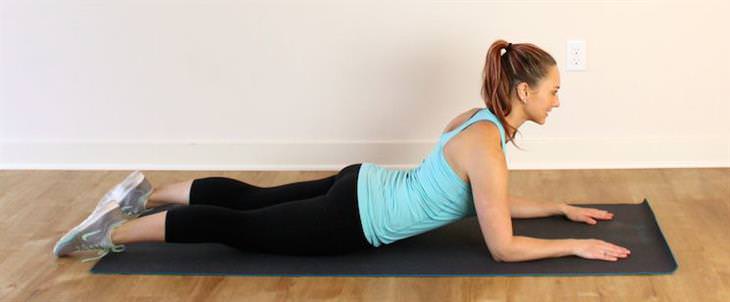
Most of us spend our day sitting, whether in the car, on the train, at the office, or at home, and practically everywhere. Unfortunately, sitting for hours during the day is very harmful to your body's health and muscles, but today you will learn some stretches that will help neutralize the damage. These exercises are recommended after a day of prolonged sitting, and they won’t take you much time or energy – they’ll all stretch and strengthen the muscles affected by being stagnant all day.
When you sit in a chair, the angle between your thighs and upper body is small, which causes your thigh muscles to shorten. To avoid this, do the following stretch.
1. While sitting on a chair, place your right heel on your left knee and keep your back straight.
2. Bend forward with your torso toward your thighs until you feel a stretch, and push yourself slightly to the right to stretch the muscle properly.
3. Stay in this position for 60 seconds, then switch legs.
When sitting all day our good posture tends to hunch over, which puts pressure on the lower back and leads to pain. The next stretch will help you neutralize the damage, improve posture, and relieve lower back pain.
1. Sit on a chair with your back straight and place your legs next to each other with your knees facing forward.
2. Turn your upper body to the right, while your left hand holds the outside of your right thigh to help stretch your body.
3. Stay in this position for 30 seconds and try to stretch the spine as much as possible. Then do the exercise to the other side as well.
When we work in front of a computer while sitting, our shoulders bend forward and cause the muscles in the neck, shoulders, and chest to become tense and with time become strained. The next stretch, despite its simplicity, will help you avoid this.
1. Sit on a chair with your back straight and tilt your shoulders as far back as possible.
2. Try holding your right ear to your right shoulder - use your right hand to apply light pressure.
3. To further optimize the stretch, stretch your left hand toward the floor.
4. Stay in this position for 30 seconds and repeat it to the other side.
The upper and lower back are both damaged during prolonged sitting. Apart from the pain, we experience in the back after sitting for many hours, our posture also becomes impaired, and the next stretch helps prevent related problems.
1. Sit on a chair with your back straight, and stretch your arms above your head bringing your hands together with your palms facing the ceiling.
2. Be sure to spread your weight on both thighs and not just one of them, and stretch your hands up and to the right – you should feel the stretch on the left side of your body.
3. To further the stretch, try lowering your shoulders keeping them as far away from your ears as possible. Make sure to keep your back straight and not to twist it.
4. Stay in this position for 30 seconds and then perform the stretch on the other side.
When we sit with our shoulders slumped over, our chest becomes strained. To improve our posture the chest needs to be released, and the following stretch will do just that.

1. Sit on the edge of a chair with your back straight.
2. Bring your hands together behind your back and stretch your shoulder blades backward.
3. Raise your hands as much as possible to further the stretch
4. Stay in this position for 30 seconds and release.
The next stretch will counteract the uneven muscle development caused by prolonged sitting, and is particularly effective when combined with weight training to strengthen the thighs.

1. Start kneeling with your left knee on the floor and your right knee bent 90 degrees. Place your hands at your sides to balance yourself.
2. Stretch your back up and your bottom down, and keep your back straight, making sure not to hunch over.
3. To further the stretch lift your hands over your head and lean forward slightly, without bending your back.
4. Stay in this position for 30 seconds, switch legs and perform again.
Our knees stiffen after sitting for a long time, which reduces their range of motion. It is possible to prevent this as well as to restore their full movement without discomfort, using the following stretch.

1. Lie on your back with your feet flat on the floor and knees bent
2. Stretch your right leg toward the ceiling, while holding your thigh with your hands.
3. Straighten the leg as much as possible and stretch it without locking the knee.
4. To further the stretch, try to bring the toes of the foot towards the floor by stretching the foot only.
5. Stay in this position for 60 seconds, then repeat it with the other leg.
This pose, along with the next, helps stretch the back and prevents the appearance of a hunchback. Do one after the other for the best results.

1. Kneel and keep your back straight.
2. Bring your buttocks back to your heels and stretch your arms forward - make sure your knees remain apart.
3. Stretch your arms as far as possible and stay in this position for 60 seconds.
This stretch continues the previous stretch and comes immediately after, and its purpose is to strengthen the abdominal muscles to support proper posture.

1. Lie on your stomach and place your elbows under your shoulders - support your body with your forearms.
2. Press the abdominal muscles and lift the chest up. Try stretching the upper back and not applying pressure to the lower back.
3. Push the shoulders down and keep them away from your ears to further the stretch.
4. Stay in this position for 30 seconds and release.
Apart from these stretching exercises, it is highly recommended that you stand up and take a short walk about once an hour. Instead of sending an email to a colleague, go to their desk and talk to them face to face. You can also go for a short walk after lunch or simply stretch your body occasionally - all of these will ease the damage caused to your body by sitting for a long time.
source: paleohacks